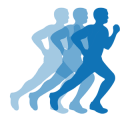Rotator cuff strain, prevalent in throwing and racket sports, signifies a tear in one of the four shoulder rotator cuff muscles. Severity varies from mild to intense.
Symptoms
Torn rotator cuff symptoms include:
- Immediate pain in the shoulder, mild to severe.
- Sensation of tearing within the shoulder.
- Pain radiating down the arm.
- Potential snapping sound for severe injuries.
- Difficulty sleeping on the injured side.
- Possible signs of shoulder impingement, especially during overhead arm movements.
When should I see a doctor?
Seek medical help if:
- Pain lasts beyond 2-3 days.
- Pain hinders workability.
- Arm or shoulder mobility is restricted after 2-3 days.
What is a rotator cuff strain?
A rotator cuff strain involves a tear in one of the four shoulder muscles: supraspinatus, infraspinatus, teres minor, or subscapularis. These muscles provide dynamic stability to the shoulder during movement, especially in overhead throwing and racket sports.
Given the shoulder joint’s wide range of motion and high-speed movements, it’s more prone to injury, particularly in activities like cricket bowling, baseball pitching, swimming, and kayaking. The supraspinatus and infraspinatus muscles are most commonly injured.
What causes a torn rotator cuff?
Rotator cuff injuries frequently occur in older athletes due to long-term overuse leading to tendon degeneration. In throwing sports, injuries often stem from rapid arm deceleration post-throw, rather than acceleration. Hence, strengthening shoulder muscles, not just the throwing ones, is crucial for those involved in such sports.
Rotator cuff strain treatment
Rotator cuff tear treatment involves pain and inflammation reduction, and tissue healing, followed by a comprehensive rehabilitation program featuring mobility enhancement, stretching, strengthening, and functional shoulder exercises.
What can the athlete do?
First aid for a torn rotator cuff involves applying the PRICE principles: Protection, Rest, Ice, Compression, and Elevation.
- Immediately apply a cold therapy compression wrap to minimize pain and swelling, which can accelerate the healing process. Use it for 10 minutes every hour initially, then 3-4 times daily as the pain subsides.
- A sling can help immobilize the shoulder for severe injuries during day activities and can be removed at night.
- After the acute phase, pain-free mobility and strengthening exercises should commence.
- For chronic injuries, alternating heat and ice can help, with heat advised during the later stages of rehabilitation.
What can a Sports Injury professional do?
For rotator cuff injuries:
- Doctors may prescribe pain relief and anti-inflammatory medication.
- Diagnostic imaging (X-rays, MRIs, CT Scans) can validate the diagnosis and exclude fractures.
- Steroid injections could be administered to decrease inflammation and enable rehabilitation.
- A comprehensive rehabilitation program, inclusive of stretching and strengthening exercises, is recommended.
- Shoulder massages, specifically cross-friction massage to the tendon, may be useful in chronic injuries.
Do I need rotator cuff surgery?
For severe rotator cuff injuries, surgery may be an option, especially for:
- Active individuals and athletes under 60.
- Cases of complete rotator cuff tears.
- Situations where non-invasive treatments don’t yield desired results within 6 weeks.
- Professional athletes seeking quick recovery.
- Jobs necessitating constant shoulder use.
Recovery time varies, with a 40-90% success rate for non-invasive treatments and a 94% satisfaction rate post-surgery. However, extensive tears often fare poorly with surgery, and older patients may experience longer healing times.
